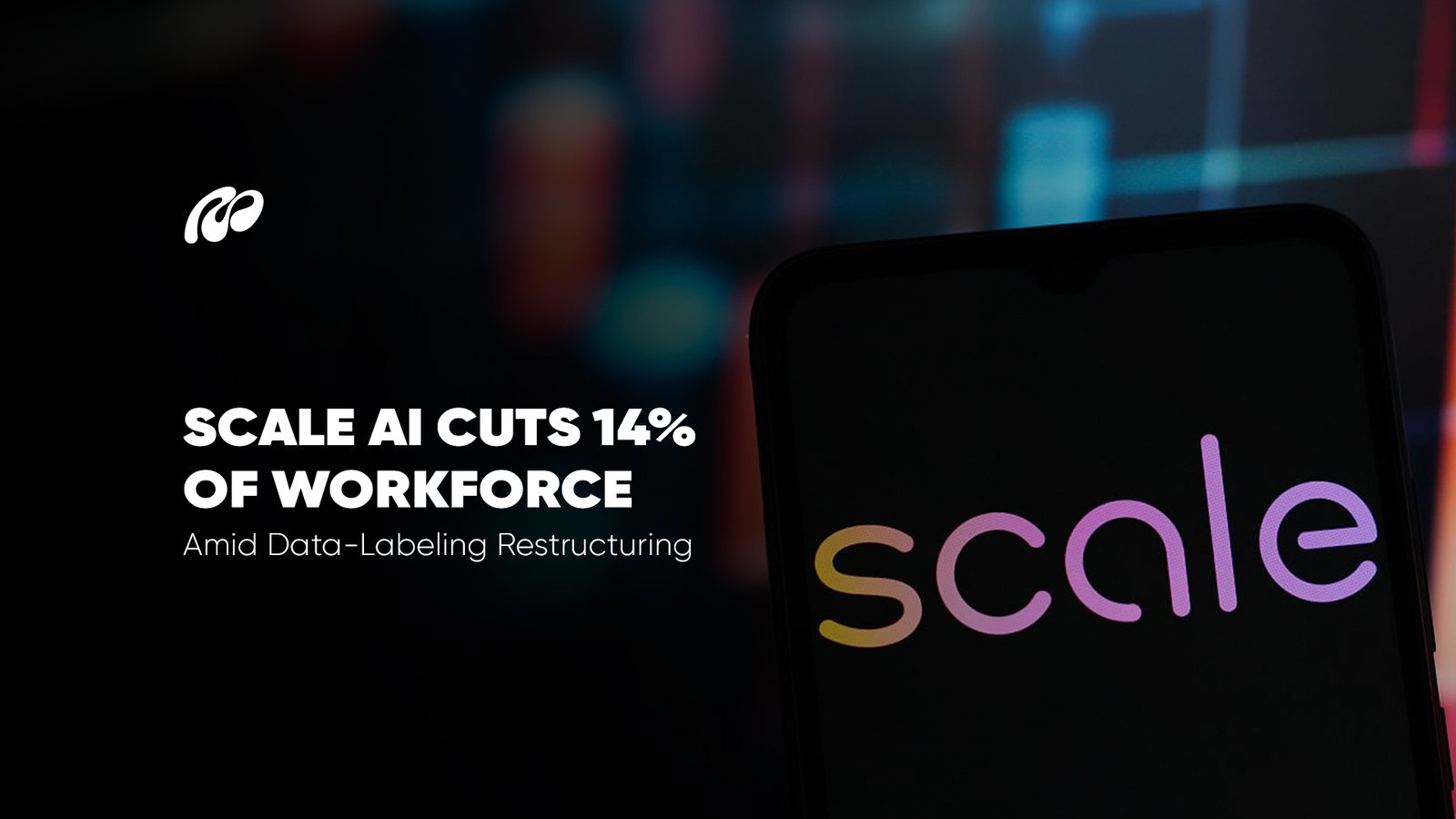Summary
-
- Scale AI has laid off 14% of its workforce, with most cuts affecting roles in the data labeling department, signaling a major shift in its operational priorities.
- The company is moving away from manual annotation services and refocusing on more automated Scale business systems to improve delivery speed and consistency.
- Changing client expectations for lower costs and faster turnaround times have played a key role in driving the Scale startup toward restructuring its workforce.
- Newer approaches to data labeling, like those used in automated annotation systems, have made it possible to maintain quality while reducing the need for large human teams.
- Economic challenges and tighter funding have pushed Scale AI to reduce overhead and focus spending on strategic, high-impact areas of growth and automation.
- The company’s long-term focus is now centered on automation, synthetic data generation, and operational efficiency to support AI scale-up image capabilities.
- This restructuring marks a broader industry trend, where AI companies are reassessing their reliance on manual labor and rethinking how they build for long-term resilience.
- Scale AI has laid off 14% of its workforce, with most cuts affecting roles in the data labeling department, signaling a major shift in its operational priorities.
Scale AI, the San Francisco-based AI infrastructure company, has announced a significant workforce reduction, laying off approximately 14% of its employees, most of whom were part of the company’s core data labeling operations. Known for powering machine learning development through high-quality annotated datasets, Scale is undergoing a structural shift aimed at moving beyond labor-intensive processes and toward more automated, AI-native solutions.
The decision comes amid growing industry pressure to streamline AI pipelines and reduce reliance on manual annotation. As foundation models and synthetic data generation gain ground, companies rooted in human-labeled datasets are being forced to evolve. Scale business leadership recognized the need to align operational strategy with the evolving demands of enterprise clients, demands that now favor speed, automation, and cost efficiency.
The move echoes a broader trend seen across the AI landscape, where firms are transitioning from human-powered backend systems to intelligent, scalable frameworks. A notable parallel can be drawn from the creative AI space, where platforms like Midjourney AI are also shifting operational focus from expansive collaborative features toward more focused, self-contained product optimization. In both cases, the evolution signals a pivot from scaling through manpower to scaling through technology.
For Scale AI, this restructuring marks more than a reduction in headcount; it’s a definitive step toward redefining what it means to scale in the era of AI infrastructure. By streamlining its human annotation footprint, the Scale startup is betting on automation to meet future demands in an increasingly competitive and efficiency-driven AI marketplace.
Scale AI’s Workforce Shakeup
The recent decision by Scale AI to lay off 14% of its workforce, primarily within its data labeling division, reflects how swiftly AI infrastructure companies must adapt to a technology-first landscape. Throughout its rapid growth, Scale populated its ranks with annotators, quality assurance analysts, and project managers, roles that fueled its reputation for delivering high-volume, precision-labeled datasets to train machine learning models. However, as the startup pivots away from manual processes, it becomes clear that the traditional model of scaling through human labor is no longer sustainable.
This transition aligns closely with the evolution seen in platforms such as Google’s new AI Studio, which aims to empower developers to build and manage AI pipelines with a no-code or low-code approach. As described in the overview of Google AI Studio, the goal is to reduce the resource-heavy aspects of model development, including data preparation and labeling, by embedding automation directly into the workflow. The intent behind such systems is to give engineers the freedom to focus on innovation, rather than painstaking tasks traditionally performed by manual teams.
By reducing its dependency on human annotators, Scale is moving toward a leaner operational model built on internal automation, scalable tooling, and smart workflows. While it may seem like an abrupt change for those affected, the shift offers a glimpse into a future where Scale AI careers will increasingly value platform engineering, AI operations, and system design over manual labeling. This also suggests that downstream roles, model training, deployment, and maintenance, are becoming the new strategic priorities for companies that aim to lead in scalable AI infrastructure.
In essence, Scale’s workforce restructuring isn’t just about cost reduction; it signifies a cultural and operational transformation. As the company aligns itself with the principles behind tools like Google AI Studio, it hints at a broader industry-wide redirection, where building and managing AI means fewer hands-on data and more minds on enabling systems.
Reasons Behind the Cuts
Scale AI’s recent workforce reduction can be attributed to significant shifts in how companies approach data preparation. Manual data labeling, once considered essential, is gradually being replaced by systems that can automate much of that work. One example is Snorkel AI, which has been gaining traction for helping teams create training data without heavy reliance on manual annotation. As these approaches prove effective, the need for large-scale human labeling teams has diminished, prompting Scale AI to adjust its operations accordingly.
Clients have also begun to request faster turnaround times and more predictable pricing. Expanding headcount to meet growing demands is no longer a practical answer. Instead, companies are building internal systems that reduce manual work while increasing output consistency. This shift in expectations is one reason why Scale AI is redirecting its focus toward automation, particularly in areas such as synthetic data creation and machine learning pipelines.
At the same time, tighter funding conditions are prompting companies to reassess their budgets. Investors are no longer just asking about growth; they’re paying attention to how efficiently that growth is managed. Reducing labor-heavy departments gives Scale AI room to invest in areas that require smaller teams with more specialized skills.
This shift isn’t just about money; it’s about redefining how the company builds for the future. As recent developments shared on Mattrics News have shown, more AI companies are now concentrating on building long-term systems that support product quality and delivery speed. Scale AI’s decision reflects a similar strategy: move away from high-volume manual workflows and commit to building around automation and precision.




